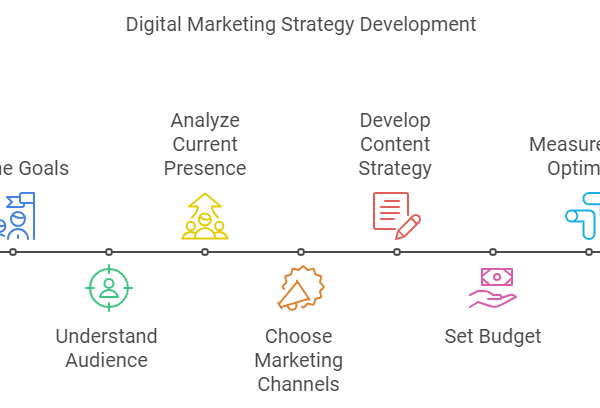
Accurately determining the project scope definition is crucial for any successful project. Without a clear understanding of the scope, it becomes difficult to identify the project’s objectives, deliverables, and timelines. Scope definition is the process of creating a detailed description of the project’s objectives, goals, and deliverables, including the boundaries of the project, its requirements, and the constraints that may affect its execution.
It is essential to have a well-defined project scope explore this PMP Mindset tool series to ensure that everyone involved in the project understands what is expected of them and that the project stays on track. Failure to define the project scope accurately can lead to confusion, misunderstandings, delays, and cost overruns. To ensure that the project scope is correctly defined, it is essential to follow a structured approach that includes several key steps. In this article, we will outline the six key steps for accurately determining the project scope definition.
Tips for Effective Project Scope Definition
Here are some tips for effective project scope definition:
- Involve all stakeholders: Involve all the stakeholders early in the project scope definition process to ensure everyone is on the same page regarding the project’s objectives, deliverables, requirements, and constraints.
- Be specific: Clearly define the project’s objectives, deliverables, and timelines, including any limitations, assumptions, and exclusions. Use specific and measurable criteria to help you assess whether the project is on track.
- Prioritize requirements: Prioritize the requirements according to their importance to the project’s success. This helps you focus on the most critical requirements first and allocate resources accordingly.
- Identify potential risks: Identify potential risks that may impact the project’s scope and develop contingency plans to manage them.
- Review and refine: Continuously review and refine the project scope as new information becomes available. This helps you ensure that the project remains aligned with the stakeholders’ expectations and business goals.
- Use templates and tools: Use project scope templates and tools to help you define and document the project scope effectively. This helps you save time and ensure that you cover all the critical aspects of the project.
- Manage changes: Develop a process for managing changes to the project scope. This helps you ensure that any changes to the project scope are approved, documented, and communicated to all stakeholders to avoid scope creep.
Examples of Successful Project Scope Definition
Here are some examples of successful project scope definitions:
- Construction of a new office building: The project objective is to construct a new 5-story office building with a maximum of 150,000 square feet of space. The project deliverables include site preparation, foundation, and structural construction, exterior and interior finishing, mechanical and electrical systems, and landscaping. The project boundaries are limited to the construction site, and the project requirements include compliance with all building codes and regulations. The project constraints include a limited budget and timeline.
- Launch of a new product: The project objective is to launch a new smartphone within six months. The project deliverables include product design, development, testing, manufacturing, and distribution. The project boundaries are limited to the development of the smartphone and its launch. The project requirements include product features, quality, and cost. The project constraints include a limited budget and competition in the smartphone market.
- Website redesign: The project objective is to redesign a company’s website to improve user experience and increase online sales. The project deliverables include website design, development, testing, and deployment. The project boundaries are limited to the website redesign and do not include marketing or other business processes. The project requirements include mobile responsiveness, SEO optimization, and user-friendly navigation. The project constraints include a limited budget and timeline.
Common Mistakes to Avoid in Project Scope Definition
Project scope definition is an essential step in the project management process. It involves identifying and documenting all the project requirements, objectives, deliverables, and constraints. However, there are common mistakes that project managers make while defining the project scope, which can lead to project failure or delay. Here are some common mistakes to avoid in the project scope definition:
- Lack of Clarity: The project scope should be clear and concise, with no ambiguity. It should be easily understandable by all stakeholders, including project team members, customers, and sponsors.
- Over-ambitious Scope: Setting overly ambitious project goals and scope can lead to unrealistic expectations, missed deadlines, and project failure. Ensure that the scope is achievable within the project timeline and available resources.
- Poor Communication: Communication is critical in project management. Ensure that all stakeholders understand the project scope and its objectives. Make sure to document any changes or updates to the scope throughout the project.
- Failure to Prioritize: Not all project requirements are equally important. Prioritize the project requirements and focus on the critical ones to ensure that they are completed within the project timeline.
- Scope Creep: Scope creep refers to the gradual expansion of the project scope beyond its original boundaries. It can lead to project delays and cost overruns. Ensure that any changes to the scope are approved by the project sponsor and documented.
- Ignoring Risks: Every project has risks that can affect the project scope. Identify potential risks and develop a plan to mitigate them before they occur.
- Not involving all stakeholders: Involve all stakeholders, including the project team, customers, and sponsors, in the scope definition process. Ensure that everyone’s expectations are aligned, and all stakeholders have a clear understanding of the project scope.
6 Key Steps for Accurately Determining project scope definition
Determining project scope definition is crucial to ensure that the project objectives, deliverables, timelines, and resources are well-defined and aligned with the stakeholders’ expectations. Here are the six key steps for accurately determining project scope definition:
- Define the project objective: The first step is to clearly define the project objective. This should include what you want to achieve and what the deliverables will be. Be specific and measurable in your objectives.
- Identify the stakeholders: Identify all stakeholders who will be involved in the project. This includes the project team, customers, sponsors, and any other relevant parties. Ensure that all stakeholders are identified and their expectations are well-understood.
- Gather requirements: Gather requirements from all stakeholders to ensure that their expectations are met. Use various techniques such as interviews, surveys, and workshops to gather the requirements.
- Prioritize requirements: Once you have gathered all the requirements, prioritize them based on their importance to the project objective. This helps to ensure that resources are allocated effectively and the most important requirements are completed first.
- Define project boundaries: Define the project boundaries by setting limits on what is included and excluded in the project. This helps to avoid scope creep and ensures that everyone is on the same page about the project scope.
- Get approval: Once the project scope is defined, get approval from all stakeholders. This includes the project team, customers, sponsors, and any other relevant parties. Ensure that everyone agrees on the project scope and that any changes are documented and approved.
Conclusion
Accurately determining the project scope definition is essential to ensure that the project is completed within the specified timeline, budget, and resources while meeting the stakeholders’ expectations. For more information on this join today PMP Bootcamp by EDUHUBSPOT To do this, it is important to define the project objective, identify stakeholders, gather and prioritize requirements, set project boundaries, and obtain approval from all stakeholders.
By following these steps, the project manager can ensure that the project scope is well-defined, achievable, and properly documented, which can help to avoid scope creep, reduce project risks, and improve project outcomes.
Author: Axiswebart team has 5+ years of experience in writing content on Project Management topics and along with different publications. Also, they are delivering good write-ups on various other projects too.











